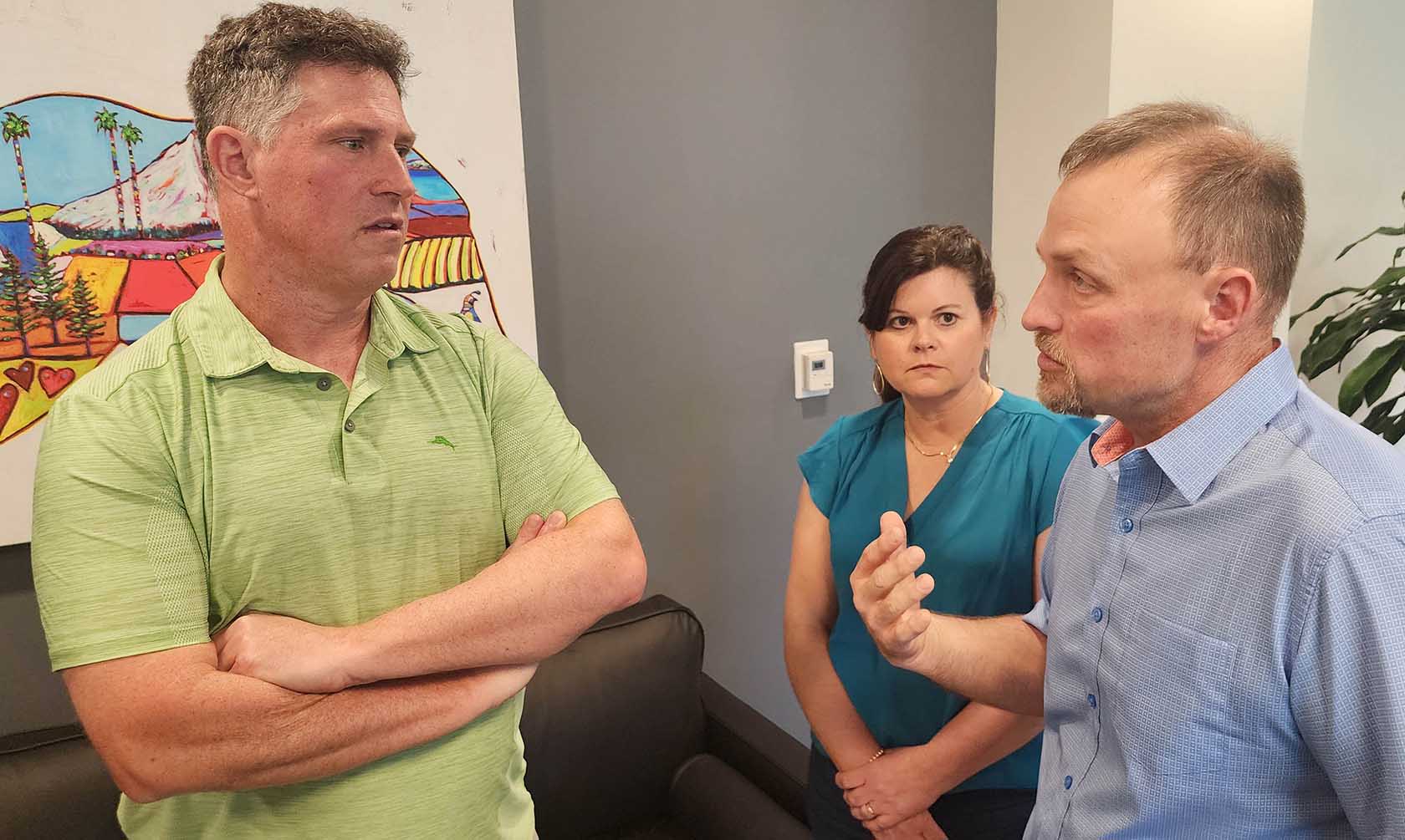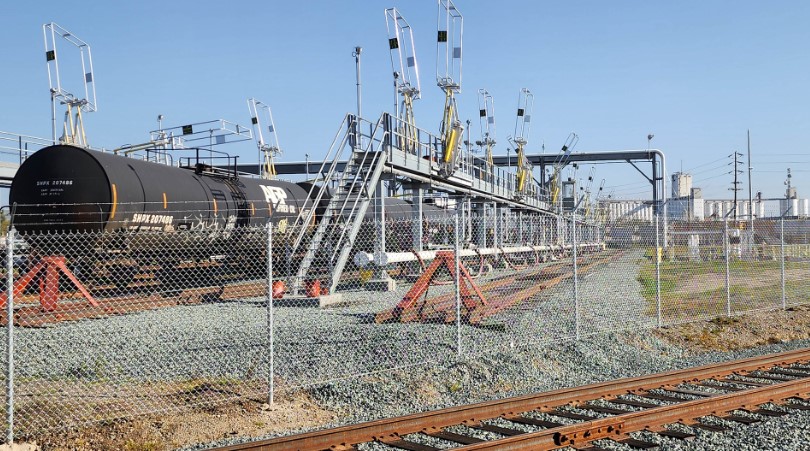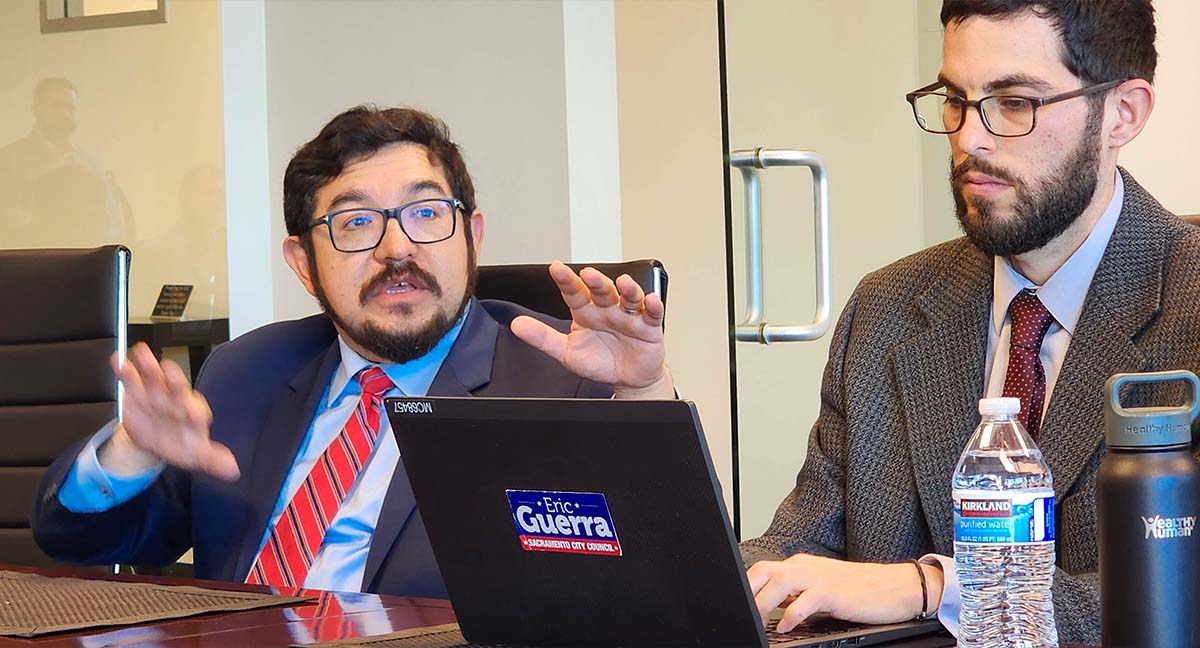
Greg Mayeur, Branch Chief, Program Planning and Management for the California Air Resources Board visits with Paula and Jeff Ellis (Photo: Iowa Soybean Association / Aaron Putze)
The Golden State offers markets to Iowa soybean farmers
May 29, 2025 | Aaron Putze, APR
While the Mamas and Papas crooned their hit song "California Dreamin' " into the country's lexicon in 1965, the Golden State's market potential for Iowa and U.S. soybean farmers was largely untapped.
Far from a dream, today's reality is the state and its 40 million residents are a demand driver for a host of soy-based products, including biofuels. If a sovereign state, California's $4.1 trillion economy would rank as the world's fifth largest (on par with the likes of Germany and Japan). On a per capita basis, California is the second largest economy in the world.
Soybean industry leaders are working diligently to make the most of market opportunities in a state that prides itself on doing things its way, especially regarding environmental concerns.
"It's the country's largest domestic consumer for biodiesel, and that's been a driver of soybean oil demand for Midwest farmers," says Grant Kimberley, Iowa Soybean Association's (ISA) sr. director of market development. "But the market isn't without its challenges, making our continued presence there a priority."
ISA District 9 Director Jeff Ellis agrees. That's why he joined other Midwest soybean farmers for Clean Fuels Alliance America's annual Golden State Tour. Held just prior to the start of planting season, participants explored the transformative impact of agriculture and clean fuels throughout Sacramento and the Central Valley.
Best option: biodiesel
Just 15 years ago, less than 1% of California's diesel inventory included biodiesel and renewable diesel. Today, renewable fuels produced from domestic feedstocks, including soybean oil, continue to be an important option for the movement of goods on the West Coast. Biomass-based diesel accounts for more than 70% of California's diesel fuel supply and nearly half of the greenhouse gas reductions under the Low Carbon Fuel Standard (LCFS).

BCW Feedstock Terminal located near Stockton, California, is a key linchpin between demand for liquid fuel feedstock demand in the Golden State and Midwest soybean farmers. The terminal is served by several rail companies including BNSF and Union Pacific.
"The reality is that air quality can be a problem in California, especially particulates which can cause health complications," says Ellis, who farms near Donnellson. "There's a tremendous desire to do better, and if that's the goal, there's no better option than biodiesel."
Yet California doesn't see renewable fuels as the entire answer. Momentum has been gathering behind achieving carbon neutrality by 2045. To get there, the state is pursuing policies and practices phasing out the use of liquid fuels in favor of electrification. The California Air Resources Board (CARB), a 16-member agency overseeing the state's air pollution control efforts, is guiding the transition.
Limiting growth
Last November, CARB revised the state's LCFS by implementing a 20% limit on credit generation for biomass-based diesel made from virgin crop oils such as soybean, canola and sunflower-seed oils. The move unsettled the biofuels market, as CARB also proposed lowering the carbon intensity of California's transportation fuel pool by 30% by 2030 and 90% by 2045.
"The long-term impact of these changes is a significant reduction in demand for soy-based fuel from our most important domestic market," says Ellis.
The first-year ISA director says this is especially concerning given California's ability to influence national and global energy and environmental policy.
Mutually beneficial
While in Sacramento, Ellis and the farmer-led delegation visited rice, dairy, and aquaculture producers, toured a fuel terminal and met with CARB directors and administrators.
Established in 1967 by then-governor Ronald Reagan, CARB is tasked with reducing air pollution. Electrification of the state's vehicle fleet is the preferred pathway. Advocates in the state's environmental justice community claims biobased fuels harm people and the environment by incentivizing destructive land
use changes and elevating food costs by diverting edible oil from food to energy.
Greg Mayeur, CARB's program planning and management branch chief, told the farmer delegation during meetings in Sacramento that capping the use of biofuels balances the needs of biofuels proponents with that of the environmental justice community.
"They're requiring us to move more quickly to electrification to meet our goals," he says." There is a general concern that we are taking food crops and using it for fuel rather than for animals or food and human consumption."
Soybean farmers have long sought to alleviate those concerns while acknowledging the mutually beneficial partnerships between U.S. soybean farmers and California. These efforts have had an immediate and positive impact on air quality in America's most populous state.
"Concerns voiced by environmental justice groups aren't based on reality," says Ellis." They also penalize U.S. farmers by lumping us in with other soybean-producing countries."
The farmer from Donnellson says it's unfair and inaccurate to compare the environmental footprint of soybeans grown in Iowa and the U.S. with oilseeds produced in Brazil and South America.
"We're not clearing land to grow soybeans," he says. "We're producing more soybeans on fewer acres while implementing numerous practices that improve soil and water quality."
Domestic biofuels production has created a market for soybean oil, a product once considered "waste" because it existed in such large quantities.
Aspirations to fully electrify California's vehicle fleet in less than 10 years are highly attractive to policy makers and the environmental justice community.
But they ignore the realities of a strained electrical grid and electricity prices already 2-3 times the national average.
Cleaner air faster
Eric Guerra, a 3-year CARB board member, admits agriculture's role in the state's energy sector has been positive.
"Clearly, biofuels are healthier for the environment than petroleum-based fuels and have played an important role in getting to cleaner air faster," he says.

Eric Guerra, board member of the California Air Resources Board (CARB) and mayor pro tem of Sacramento, makes his point during discussions with Midwest soybean farmers.
Improving air quality is an acute priority for California's sixth largest city (pop. 529,000). Sacramento is situated within a geographical bowl making it susceptible to high concentrations of particulate matter originating from vehicle emissions and forest fires.
"The big issue we still have today is helping children with asthma, especially during the summer," Guerra says. "Going to biofuels has been helpful while progressing to carbon neutral goals."
California Gov. Gavin Newsom has directed the state to redouble efforts to scale up electric and non-combustible energy use during his remaining two years in office. Regulatory officials have responded by incentivizing electric vehicle sales, codifying the availability of electric charging stations in the construction of fueling stations and condominiums and exploring increased production and use of hydrogen.
"It's a matter of when, not if, people will purchase an electric vehicle," Guerra says. "There's idealism and optimism. The idealism is very pervasive in the legislative arena."
But renewable fuels advocates say the transition will prove difficult as aspirations to go 100% electric collide with the realities of rising electric costs, increased blackouts and shifting policy and regulatory priorities.
"We need to be engaged in this market as it faces many headwinds," says Kimberley, who farms near Maxwell in addition to leading the Iowa Biodiesel Board. "We need to understand the challenges and difficulties of the California marketplace, engage with the regulators and policy makers who have the power and counter the misinformation about soy-based fuels."
Ellis returned from California with renewed optimism.
"There's hope as it relates to CARB and the LCFS and continued demand for soy," he says. "It's not going to be an easy road, but then again anything worth having takes effort.
"Our voices matter," he adds. "We have the best product for making California's air cleaner today and for decades and generations to come."
Story by Aaron Putze, APR
Back